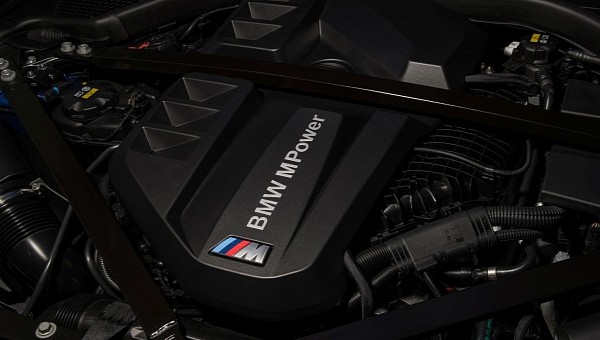When BMW M started making M Performance electric vehicles like the i4 M50 and iX M60, the Bavarian automaker made it clear that internal combustion is here to stay for the foreseeable future. Just before the veils were lifted off the second-generation M2, the big kahuna of BMW M acknowledged that the epoch of pure ICE vehicles is coming to an end.
Codenamed G87, the 2023 model year BMW M2 will be the last bonafide M to feature a combustion engine with no kind of electric assistance whatsoever. Franciscus van Meel also let it slip that 48-volt and plug-in systems will keep the combustion engine alive, and that BMW M is currently developing full-electric drives, including a four-motor system.
Tucked away neatly in evo magazine’s latest issue, BMW M engineering boss Dirk Hacker confirmed a new generation of combustion engines without going into specifics. We don’t know if there’s a case to be made for a loss in translation from German to English, though. New generation means clean-sheet design, which also means millions over millions of euros in research and development. On the other hand, updates for the current generation of M-specific engines are a bit more financially sound.
Regardless of this fine detail, BMW M enthusiasts can breathe out now. The upcoming Euro 7 standards won’t kill off combustion engines, and the upcoming Corporate Average Fuel Economy standards aren’t as draconic as certain publications make them out to be. Both sets of regulations will certainly force automakers to trim down their combustion-engined lineups, but as highlighted earlier, the ICEpocalyse still is quite a few years away.
In regard to BMW M’s current crop of S-designated engines, there are only three to speak of. The S58 opens the list, a 3.0L twin-turbo sixer with its cylinders arranged in a line. Developed from the B58, the M-specific engine was introduced in the X3 M and X4 M compact luxury crossovers.
Gifted with mono-scroll turbochargers, Mahle-sourced forged steel pistons with the German parts manufacturer’s proprietary anti-friction coating, a forged chrome molybdenum heat-treated steel crankshaft, and forged steel connecting rods, the S58 further boasts direct fuel injection, variable valve lift (as in Valvetronic), as well as variable valve timing (Double VANOS).
Its most powerful application to date is the G82 M4-based 3.0 CSL with 553 horsepower (560 ps) on deck. As for peak torque, make that 479 pound-feet (650 Nm) in the M4 CSL and the Competition-badged M4, M3, X3 M, and X4 M. When it comes to eight-cylinder mills, the long-running S63 appears to be on its way out to make room for the newer S68.
These lumps may feature similar displacements, but BMW M considers the S68 as being nut-and-bolt different from the S63. Developed specifically for 48-volt mild hybrids and plug-in applications, the newcomer integrates electric VANOS, upgraded turbos, a different oil sump, an oil cooler, and a crankshaft. Could this be the M division’s last ICE? Only time will tell, but if you ask me, my reply would be “hopefully not.”
Tucked away neatly in evo magazine’s latest issue, BMW M engineering boss Dirk Hacker confirmed a new generation of combustion engines without going into specifics. We don’t know if there’s a case to be made for a loss in translation from German to English, though. New generation means clean-sheet design, which also means millions over millions of euros in research and development. On the other hand, updates for the current generation of M-specific engines are a bit more financially sound.
Regardless of this fine detail, BMW M enthusiasts can breathe out now. The upcoming Euro 7 standards won’t kill off combustion engines, and the upcoming Corporate Average Fuel Economy standards aren’t as draconic as certain publications make them out to be. Both sets of regulations will certainly force automakers to trim down their combustion-engined lineups, but as highlighted earlier, the ICEpocalyse still is quite a few years away.
In regard to BMW M’s current crop of S-designated engines, there are only three to speak of. The S58 opens the list, a 3.0L twin-turbo sixer with its cylinders arranged in a line. Developed from the B58, the M-specific engine was introduced in the X3 M and X4 M compact luxury crossovers.
Gifted with mono-scroll turbochargers, Mahle-sourced forged steel pistons with the German parts manufacturer’s proprietary anti-friction coating, a forged chrome molybdenum heat-treated steel crankshaft, and forged steel connecting rods, the S58 further boasts direct fuel injection, variable valve lift (as in Valvetronic), as well as variable valve timing (Double VANOS).
Its most powerful application to date is the G82 M4-based 3.0 CSL with 553 horsepower (560 ps) on deck. As for peak torque, make that 479 pound-feet (650 Nm) in the M4 CSL and the Competition-badged M4, M3, X3 M, and X4 M. When it comes to eight-cylinder mills, the long-running S63 appears to be on its way out to make room for the newer S68.
These lumps may feature similar displacements, but BMW M considers the S68 as being nut-and-bolt different from the S63. Developed specifically for 48-volt mild hybrids and plug-in applications, the newcomer integrates electric VANOS, upgraded turbos, a different oil sump, an oil cooler, and a crankshaft. Could this be the M division’s last ICE? Only time will tell, but if you ask me, my reply would be “hopefully not.”












